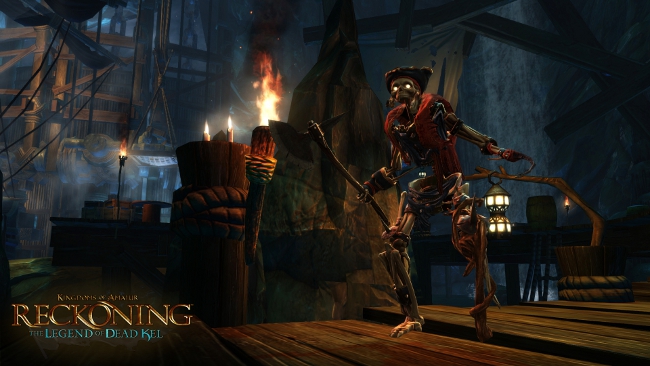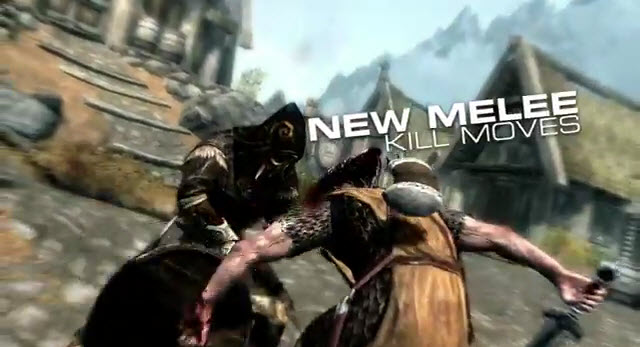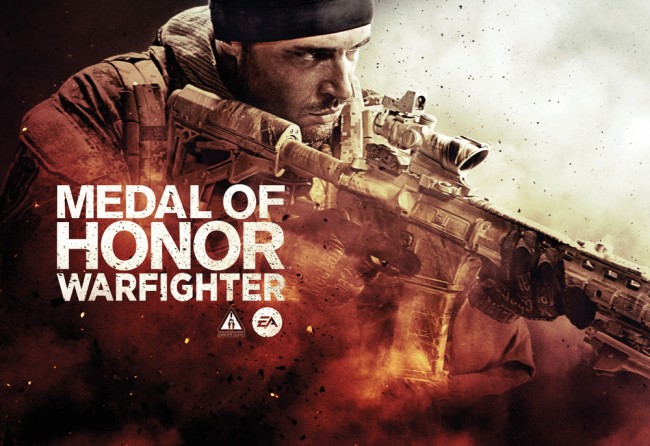Child of Eden (Xbox 360) Review

When news broke that Tetsuya Mizuguchi was developing another mind-trip of a rhythm shooter, I was on-board right away. Mizuguchi, the genius behind Rez, Lumines, Meteos and Space Channel 5, is a master at combining powerful audio-visual experiences with intense gameplay. No one really knew what to expect from a game called Child of Eden. Then at E3 2010, Mizuguchi showcased the game with the Kinect sensor, surprising everyone with its amazing, abstract graphics, electronic/J-pop soundtrack and a game mechanic that seemed perfectly matched to Microsoft’s peripheral – using one’s hands to control two targeting reticules.
The prospect of controlling a shooting game with Kinect was a little daunting, but I was up for the challenge. After my aunt bought my little sister a Kinect for Christmas, I knew that as a fan of Q Games’ previous titles I simply had to get this game and try it out.
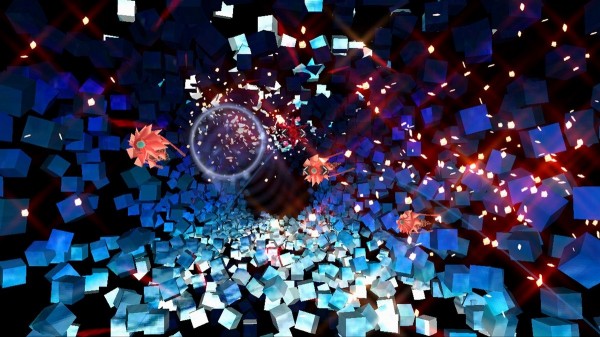
The Sorcerer’s Apprentice
Right off the bat, Child of Eden drops you into a digital wonderland with a stylish live-action intro scene. Story-wise, the game is a prequel to the much-loved Rez, and your objective is to save Project Lumi from a virus attack so that it can create Eden, the AI whom your character must save in Rez. If you’ve never played Rez, I highly recommend the HD remake with extra content (Rez HD) to anyone interested in trying a rhythm-rail-shooter hybrid. It’s available for relatively cheap on XBLA, and if you enjoy Rez, you’re sure to love Child of Eden.
Be forewarned: this is not your average rail-shooter, although it’s easy to miss this fact if you’re not aware of the combo-chain system. If you’re playing it right, it’s a hybrid of rail shooter and rhythm game, rewarding players for releasing the lock-on attack along with the beats of the music. Only full-lock-ons (8 enemies) will build towards your combo, and the only way to lose your combo is to lock on to 8 enemies and release the lock on without hitting the beat. The basic principle is to stay on the beat, and build up your multiplier, which is easy enough since your shots always line up with the music, creating new samples that in turn add complexity to the soundtrack.
The controls are pretty simple. Interestingly, there’s an ongoing argument as to which is the better control scheme, the controller or the Kinect. With the controller you have more accuracy and the vibrating pulse actually helps a lot in keeping the beat, but your reticule moves slower than with Kinect, a disadvantage at some spots.

The left hand (RT/R2 on the controller) controls a pulsing violet laser called the ‘tracer’ and is needed to exterminate missiles, certain enemies and barriers. The right hand (A button) is the main weapon, a lock-on system very similar to the one in Rez. Lock-ons are released via wrist flicks, which can be subtle or exaggerated. Kinect has proven to be surprisingly responsive in its ability to detect wrist flicks, although after an hour or so in Child of Eden’s digital tunnels, your wrists and arms are guaranteed to be sore. Mastering the eight-lock combo system is essential to establishing chains in the game and getting your multiplier up, and the satisfying sounds you create from unleashing lock-on shots add greatly to the experience.
I’ve found that Kinect is a surprisingly solid control choice for the game, despite my reservations (the peripheral has some known lag issues, and is not always perfect). Kinect can be picky with regards to lighting despite the fact that it’s supposed to be infrared, and on some occasions I found my cursor doing things I didn’t want it to. On the whole, however, the Kinect feels like the definitive way to experience this game and I recommend it wholeheartedly. However, I’ve noticed that on the leaderboards, the controller scores are higher than the Kinect scores (they are in separate categories), so for competitive-level play I have to give it to the controller. Patience and memorization are key to improving one's score, as is a good sense of rhythm and timing. I am happy to report that anyone who enjoys climbing leaderboards will find lots of replay value here. Child of Eden is just as much a colorful acid trip and light show as it is a game.
Like many shooters before it, Child of Eden has a ‘bomb’ that can be used to exterminate enemies on-screen should they overwhelm the player. Hitting B or raising both arms in the air activates ‘euphoria’, which creates a trippy laser show that obliterates opponents. I rarely used euphoria, and using it takes some points off your score, but it can be very handy in situations where you find yourself overwhelmed by missiles.

Dreamlike Levels
The six archives in Child of Eden are so epic and differ from one another so greatly that at times it feels like you’re playing six different games. Everyone will have a favorite archive or two. It’s hard not to be taken on an emotional journey while playing the ‘Evolution’ archive, and I’ve taken a personal liking to the ‘Journey’ and ‘Hope’ archives, the latter an extra level with a down-tempo hip-hop beat that remains unbeaten by me despite multiple attempts. A quick glance at the leaderboards shows that not everyone has actually made it to the end of this monstrosity of a level, without a doubt the most difficult in the game.
With no multiplayer to speak of, the leaderboards and unlockables provide the majority of the game’s replay value. I’ve spent a few hours trying to whittle up my score in order to up my rank. Unfortunately there is no ability to save replays, but I find it completely understandable since the archives themselves are quite long – an average of ten minutes each.
It’s difficult to describe too much of what goes on without spoiling some of the game’s many surprises, but suffice it to say you will navigate a wide variety of locations and encounter translucent glowing serpents, missile-firing spaceships, neon fret-boards, a giant clock tower, massive flying whales, manta rays, a flaming phoenix, and enormous flowers, just to name a few of the sights you’ll see. The running boss from Rez also makes a return appearance, this time as two bosses. Not knowing what trippy sights and sounds are just around the corner is a huge part of the appeal of this game. In all seriousness, this is the final nail in the coffin of the ‘games are not art’ argument. Simply put, if this game isn’t art, then nothing is art. There’s enough awesome symbolism here to inspire a master’s thesis at an art institute.

The game flows effortlessly from one locale to the next, subdividing each archive into segments connected by portals that take you ever deeper down the rabbit hole that is Project Lumi. Mizoguchi has said that Child of Eden, like Rez, is an experiment in inducing synesthesia, a neurological state where stimulation in one of the senses creates involuntary experiences in another. This game gets you in ‘the zone’ very quickly, and before long you’ll be playing it on absolute instinct.
The differences between Rez and Child of Eden begin with the latter game’s two-weapon control scheme, longer archives and more layered audio. Rez by comparison is a much more minimalistic game, but not necessarily in a bad way. At times the archives in Child of Eden can be over-long and suffer from a feeling of being stretched out in order to either fit the songs or lengthen the experience, whereas Rez was a perfectly fluid shooter that had a reasonable difficulty with a few challenging spots, mainly during boss battles. By contrast, a few random sections in Eden can be frustrating and kill you quickly, yet most of the game is a total cakewalk. The demanding areas left me scratching my head, since dying really throws off the groove of the game and takes one out of the experience. The easy mode, Feel Eden, is too easy and does not include all the levels, while Hard mode is simply annoying, thanks to missile spam. Next time around, I would rather Mizoguchi either (a) make the entire game with a single difficulty curve, or (b) make the entire game easy with a more complex and less forgiving combo system.

My own opinion is that Eden’s ‘filler’ sections were put specifically to act as buffer breaks for Kinect users to rest their arms, but in all honesty the exhaustion of playing through a level multiple times outweighs the benefits of having rest periods within the levels themselves. It’s the difference between listening to one ten-minute song and two five-minute songs – you’re not always in the mood to play a ten-minute song, but two five-minute ones might be just the right amount.
Similarly to Rez, the multi-form bosses here provide many of the game’s best moments. I would be doing a disservice by describing the specific boss battles, but I think it’s enough to say that you won’t be disappointed.
With all that said, it’s difficult to compare the two games, because of the thematic and stylistic differences. I would say that Rez is a more focused shooter with a low-key dub soundtrack, whilst Child of Eden is more of an intense sensory experience, a viable alternative to going to a rave. If I had to recommend any game from the history of gaming to play in an altered state of consciousness, Child of Eden would be at the very top of my list.
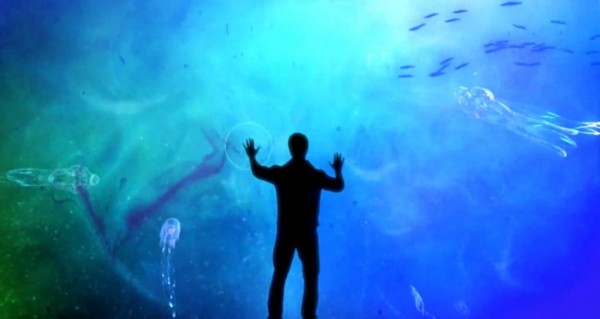
Incredible audio-visual synthesis
This is the type of game that is just begging to be played in 1080p with a surround sound system. I bought an HDMI cable and hooked this up to a video projector with Kinect just to get the full experience. The way the colors pop out and the backgrounds sparkle and teem with life is a sight you don’t want to miss. It’s the closest you’ll get to a laser light show in your own living room, and the many extras including art galleries and visual effects that can enhance your experience go a long way towards extending the life of the game.
The soundtrack, by Mizoguchi’s own group Genki Rockets, is a mix of electronic, trance and J-pop. If you enjoyed their LP “Heavenly Star”, you’ll find a lot to like here, as the archives contain plenty of samples and remixed segments from the songs on that album. Every level has a different sound to it, although it’s not the kind of material you might expect to hear at a club. For the most part the music is actually quite low-key, allowing the sounds you create by ‘purifying’ enemies to lead the mix. Because it’s so difficult to describe how well all these great elements come together to create a unified experience, I strongly recommend viewing a few minutes of the game on YouTube in order to get a good sense of what to expect.
Another milestone in rhythm gaming
I feel that there is still so much to write about Child of Eden, but most of it is based on theory and has no place in a formal review. I do feel it’s important to get the word out there so that anyone with an interest in this mostly overlooked game might be inspired to give it a shot.
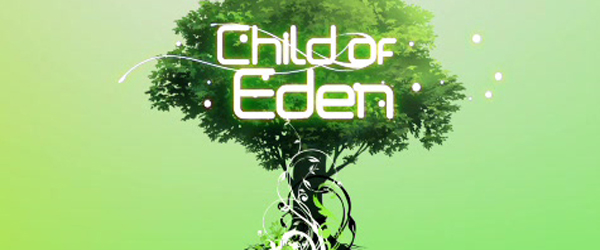
Just how much do I, personally, love this game? Three of my favorite types of games are hybrid games, rhythm games and rail shooters, so I might be a little biased when I say that Child of Eden is one of my top three of 2011, just behind Dark Souls and The Legend of Zelda: Skyward Sword. It’s not a game I’ve spent more than 20 hours on, but it’s been one of the more memorable games of my life.
However, as much as I wish I could give it a higher score, I have to acknowledge that Child of Eden is not a game for everyone. It’s short, for one, and most players will not have a chance to experience it on Kinect. It’s not as hardcore as most rail shooters (a pro at bullet hell games can ‘beat’ this in a weekend) and its rhythm elements are simple in theory but often difficult in execution, yet this isn’t the kind of game you play for any one reason.
The reason to play this game is that life is too short to miss out on new and exciting experiences. If you’ve ever been to a rave, a laser light show or an electronic concert and wanted to take that intense, euphoric feeling of sensory-induced connectedness home with you, by all means, let Child of Eden take you away.
Score: 90/100
Pros:
- Unique hybrid rhythm/rail-shooter gameplay with fantastic bosses
- Epic soundtrack and visuals
- Trippy sensory experience like no other
Cons:
- Relatively short
- Random difficulty spikes in some archives can be distracting
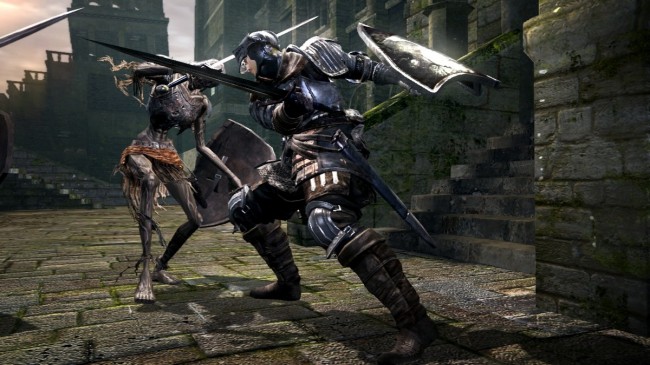 And Dark Souls is back on the spotlight! Namco Bandai says that a big announcement is coming. What is it? Your guess is as good as mine. People say it could be DLC content for the game, some say a PC port. For me, I hope it's content. This game was just too good and I'd be happy to get back into the crazy world of Dark Souls to die over and over again.
And Dark Souls is back on the spotlight! Namco Bandai says that a big announcement is coming. What is it? Your guess is as good as mine. People say it could be DLC content for the game, some say a PC port. For me, I hope it's content. This game was just too good and I'd be happy to get back into the crazy world of Dark Souls to die over and over again.
